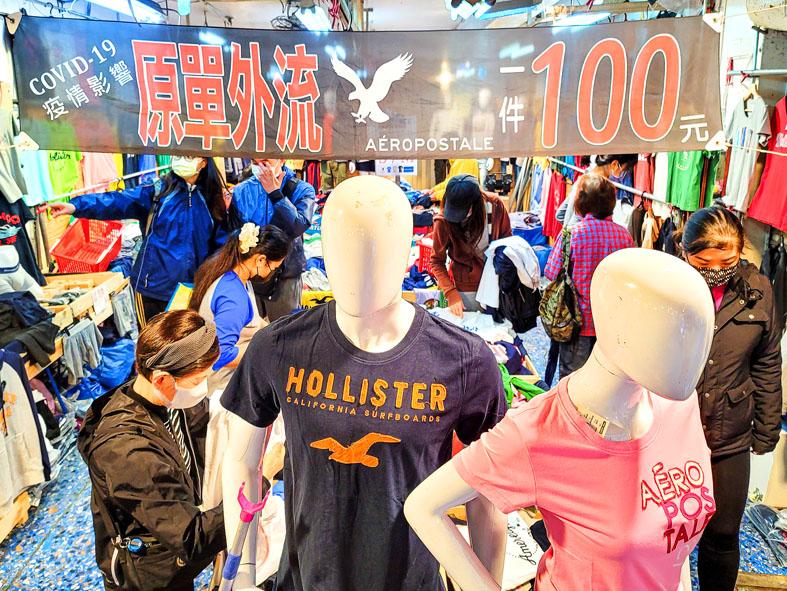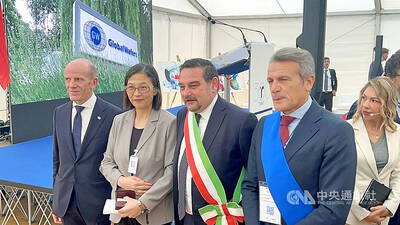The Chung-Hua Institution for Economic Research (CIER, 中華經濟研究院) yesterday raised its forecast for Taiwan’s GDP growth this year to 3.96 percent, saying that achieving 4 percent growth would be difficult amid worsening inflation, tight monetary policies and geopolitical tensions.
The latest projection is 0.29 percentage points higher than CIER’s forecast in December last year.
It is more conservative than the central bank’s and the Directorate-General of Budget, Accounting and Statistics’ (DGBAS) growth forecasts of more than 4 percent.

Photo: CNA
The CIER’s latest forecast, which it based on strong growth in exports and private investment, also put the institute at odds with the IMF, which on Tuesday cut its forecast for Taiwan’s GDP growth by 0.1 percentage points to 3.2 percent.
CIER president Chang Chuang-chang (張傳章) attributed the upward revision to better-than-expected exports and private investment last quarter, when, he said, firms involved in technology, urban renewal projects and development of renewal energy sources performed impressively.
Taiwan could this year see more balanced growth in domestic and external demand, Chang said.
However, uncertainty persists due to the Russia-Ukraine war, worsening inflation, faster interest rate hikes globally and spreading lockdowns in China, which accounts for about 40 percent of Taiwan’s exports.
Intensifying downside risks make GDP growth of 4 percent increasingly difficult, although not impossible, depending on how unfavorable factors turn out, the academic said.
China has locked down major industrial and business hubs in line with its “zero COVID-19” policy, and manufacturing activity of Taiwanese firms in those areas came to a halt, Chang said.
The lockdowns have led to supply chain disruptions and would dent corporate revenue this month and beyond, if Beijing stands by its draconian virus control measures, he said.
Taiwan’s exports and imports might expand 17.25 percent and 17.42 percent annually this year, softening from 29.34 percent and 33.32 percent last year respectively, CIER said.
The consumer price index (CPI) might accelerate 2.56 percent this year, up from 1.97 percent last year, as the prices of food, oil products and raw materials rise, the institute said.
It would be the first time since 2008 that the gauge exceeds the 2 percent alarm level for a whole year, it added.
In the first quarter of this year, the CPI grew 2.81 percent from a year earlier, DGBAS data showed.
The IMF expects Taiwan’s CPI to grow 2.3 percent this year.
Inflationary pressures might start to ease in the second half of this year, if there are no typhoons to drive prices higher, Chang said.
The unemployment rate would drop to 3.65 percent this year, compared with 3.95 percent last year and the IMF’s forecast of 3.6 percent, as Taiwan learns to coexist with COVID-19 to avoid sacrificing economic activity, CIER said.
The New Taiwan dollar is expected to trade at NT$28.51 against the US dollar, compared with NT$28.02 last year, CIER said.
The forecast represents a 1.75 percent depreciation from last year, but is still better than many other Asian currencies, it said.
Additional reporting by CNA

RECYCLE: Taiwan would aid manufacturers in refining rare earths from discarded appliances, which would fit the nation’s circular economy goals, minister Kung said Taiwan would work with the US and Japan on a proposed cooperation initiative in response to Beijing’s newly announced rare earth export curbs, Minister of Economic Affairs Kung Ming-hsin (龔明鑫) said yesterday. China last week announced new restrictions requiring companies to obtain export licenses if their products contain more than 0.1 percent of Chinese-origin rare earths by value. US Secretary of the Treasury Scott Bessent on Wednesday responded by saying that Beijing was “unreliable” in its rare earths exports, adding that the US would “neither be commanded, nor controlled” by China, several media outlets reported. Japanese Minister of Finance Katsunobu Kato yesterday also

‘DRAMATIC AND POSITIVE’: AI growth would be better than it previously forecast and would stay robust even if the Chinese market became inaccessible for customers, it said Taiwan Semiconductor Manufacturing Co (TSMC, 台積電) yesterday raised its full-year revenue growth outlook after posting record profit for last quarter, despite growing market concern about an artificial intelligence (AI) bubble. The company said it expects revenue to expand about 35 percent year-on-year, driven mainly by faster-than-expected demand for leading-edge chips for AI applications. The world’s biggest contract chipmaker in July projected that revenue this year would expand about 30 percent in US dollar terms. The company also slightly hiked its capital expenditure for this year to US$40 billion to US$42 billion, compared with US$38 billion to US$42 billion it set previously. “AI demand actually

Jensen Huang (黃仁勳), founder and CEO of US-based artificial intelligence chip designer Nvidia Corp and Taiwan Semiconductor Manufacturing Co (TSMC, 台積電) on Friday celebrated the first Nvidia Blackwell wafer produced on US soil. Huang visited TSMC’s advanced wafer fab in the US state of Arizona and joined the Taiwanese chipmaker’s executives to witness the efforts to “build the infrastructure that powers the world’s AI factories, right here in America,” Nvidia said in a statement. At the event, Huang joined Y.L. Wang (王英郎), vice president of operations at TSMC, in signing their names on the Blackwell wafer to

Taiwan-based GlobalWafers Co., the world’s third largest silicon wafer supplier, on Wednesday opened a 12-inch silicon wafer plant in Novara, northern Italy - the country’s most advanced silicon wafer facility to date. The new plant, coded “Fab300,” was launched by GlobalWafers’ Italian subsidiary MEMC Electronics Materials S.p.A at a ceremony attended by Taiwan’s representative to Italy Vincent Tsai (蔡允中), MEMC President Marco Sciamanna and Novara Mayor Alessandro Canelli. GlobalWafers Chairwoman Doris Hsu (徐秀蘭) said the investment marked a milestone in the company’s expansion in Europe, adding that the Novara plant will be powered entirely by renewable energy - a reflection of its